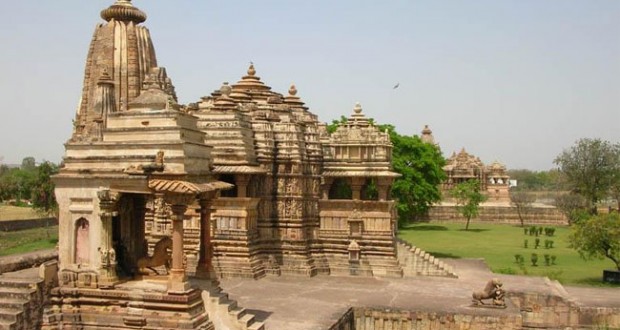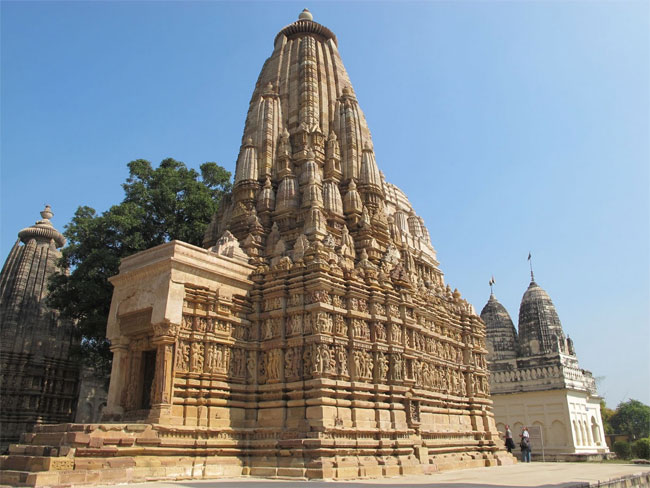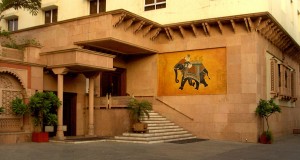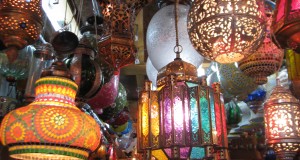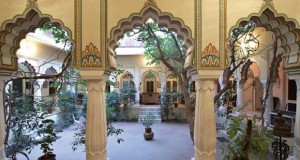Review Overview
3
Summary : Khajuraho was recently declared a WorldHeritage Monument, under the UNESCO scheme.
The temples are all open from sunrise to sunset, and you can get right round them in 5/6 hours. To make best use of your time, hire out a proper badge-carrying guide from the tourist office. Touts and unofficial guides are prohibited inside the Western Group of temples, which is a good thing. Every temple, however, has a guard with a large store of anecdotal information to impart. If you happen to miss any of the sex scenes, they’ll eagerly point these out to you. And they’ll be very happy with a rupee or two for their (unsolicited) services. Khajuraho was recently declared a WorldHeritage Monument, under the UNESCO scheme. The temples are well maintained by the Archaeological Survey of India and in very good condition. They are ,i envetne ifr tehesret iis na lgot of aparent repetition in the sculptures. Theroticarvings are well distributed, but not exclusive. As one archaeologist observed: ‘Khajuraho’s temples belong to that stage of development of the religious art of India, when sculpture and architecture were perfectly integrated’.
Most tours start at the Western Group of temples. The Rsl admission covers en ry to the Archaeological Museum across the road, which you can visit later when them day becomes hotter. Open 9 am to 5 pm, except Friday, it houses a beautiful collection of sculpture from the temples both ruined and existing. The museum takes just 20 minutes to walk through.
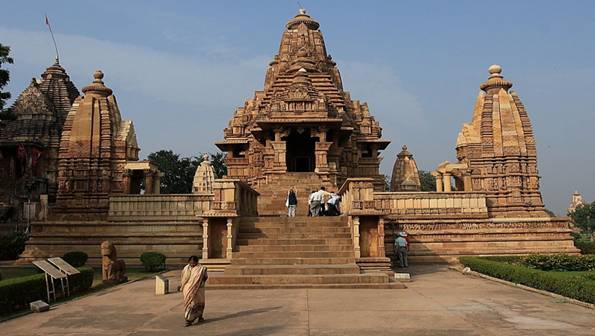
The Western Group of temples make particularly easy viewing—they are all contained in one compact area (not spread out, as at Bhubaneshwar) and are surrounded by gardens beautifully maintained by the Archaeological Survey. A leisurely tour round them should take about 2 hours.
As a general introduction, the architecture of the three main temples follows a five-part pattern: each temple having an ardhamandapa or entrance porch, leading into a pillared niandapa hall, then an antarala or vestibule, and finally an enclos d corridor or pradakshina which runs around the inner sanctum or garb griha. Each of the Khajuraho temples stands on a high masonry platform, the primary exteri )r features being the distinctive spires or shikaras, which move vertically upwards i n rhythmic stages, giving a total effect of grace and lightness, reminiscent of an ascending range of Himalayan peaks.
Inside the gateway, just to the left, is the first group of four temples. The largest one, the Lakshmana (c. AD 930-50) is a very early example, also the only hajuraho temple to have remained completely intact. The decorative sculpture includes fine figures of apsaras (heavenly nymphs), erotic scenes, and a frieze running right round the base which includes some of the more explicit erotica. The Devi and Farah temples are two small shrines opposite the Lakshmana; the Varah being dedicated to Vishnu in his incarnation as a boar. Outside the enclosure is Matangesvara, the fourth of the group, which is still used for worship. Each evening between 6.30 pin and 7.30 pm, depending on the time of year, is the evening arti or prayers to which all are welcome.
At the back of the Western enclosure, you’ll find the biggest and best of all Khajuraho temples, Kandariya Mahadev (1025-50). The zenith of Chandella art, its main spire soars to a height of 31 m (108 ft), and every inch of its surface is covered in intricate carvings, each one a masterpiece. Among the 872 statues between 60 and 75 cm high within and without, very few can be termed erotic. Kandariya is the showpiece temple of Khajuraho—its carvings turn up on all the naughty postcards touted round India. Two other temples share the same extended platform; the small Mahadeva (largely ruined, but houses famous sculp ture of lion being fondled by androgynous figure) and the Devi Jagadamba with some of the finest sculptures.
At the north-east corner of the enclosure, you’ll find Chitragupta Temple, dedi cated to Surya, the sun god. Despite poor condition, some fine processional, dancin and hunting sculpture reliefs remain. So does an 11-headed statue of Vishnu (l0 incarnations, plus Vishnu himself) and a lintal relief of Surya being pulled along in his chariot by seven spirited steeds. Completing your circuit of the compound at the south-east end, there’s the Parvati Temple and Vishvanath Temple, dedicated to with its large Nandi bull. Steps are flanked with elephants (south) and lions sculptures are devoted almost exclusively to women, engaged in all types of daily activity. Take a rest, then head out by taxi or cycle to the Eastern Group of temples, situated beside the original Khajuraho village.
This group divides into two: three Hindu temples lie on the northern side of the ge, then three Jain shrines within a walled enclosure. The Parsvanatha is unlike any other temple surviving at Khajuraho in that it lacks a platform base and the ▪sculptures are at eye level. The two other Jain temples are the Adinatha (apart from ain image within, looks very Hindu) and the Santinatha (modern, but houses collection of older sculptures). Outside this group, there’s a little museum set up by the local Bain community (entrance Rsl). Back in the village are the Hindu shrines, the javari Temple (c. 1075-1100, fine small-scale architecture, dedicated to Vishnu), Vamana (a little further north, dedicated to Vishnu’s incarnation as a dwarf, exterior adorned with profusion of ‘celestial maidens’), and the Brahma Temple listically older and probably originally dedicated to Vishnu, although it contains a four-face Shivalinga). Look out for the large Hanuman Statue, now within a modern shrine on the road between the Western and Eastern Groups.
If you’ve timed things right—wisely visiting the Eastern temples from 4 to 6 pm, en the heat is down—you’ll just be strolling back into town for the glorious sunset over the western temples, their range of soaring shikara-spires haloed by the bright crimson sky.
If you’ve finished earlier than expected at the Jain enclosure visit the Duladeo temple a few hundred metres south of the road and next to the Khodar stream. The most remote temple, nearer the airport, and easily visited en route if you allow an extra 30 minutes, is the Chaturbhuj temple. The Chaturbhuj temple is isolated from other remaining temples and seldom visited but it houses one of the most pressive statues at Khajuraho. The 2.7-m high image of the four-armed Bak- ▪ whinamurti Shiva must be an example of the size of image originally enshrined in all e temples.
A punishing, but rewarding, day excursion by cycle is out to the river 23 km m(1iles) 1out/ of Kh2a4juraho. Here, walk along the rocks for 10 minutes, to find rge waterfall (plus crocodiles). It’s an excellent situation for bathing. Other popular excursion spots are Panna National Park (40 km) and the Hunting Palace of the Maharajahs (20 km). Both are best visited by taxi, arranged by Mr Lavania of hajuraho Tours, just opposite the entrance to the Western Group, or by the tourist
RECREATION Chandella Hotel’s swimming-pool is just the place to cool off after all those hot, dusty temples. Oberoi has a pool too, but it has little shade and you’ll burn. In the evening, there’s live sitar music and dance at the Chandella, and good cultural programmes the Oberoi’s lobby.
SHOPPING Lots of thellas (push-cart stalls) and hawkers sell postcards, ‘old’ coins and artefacts. There is one shop near the Western Group called ‘Junks and Jewels’ which sums up he general standard.

